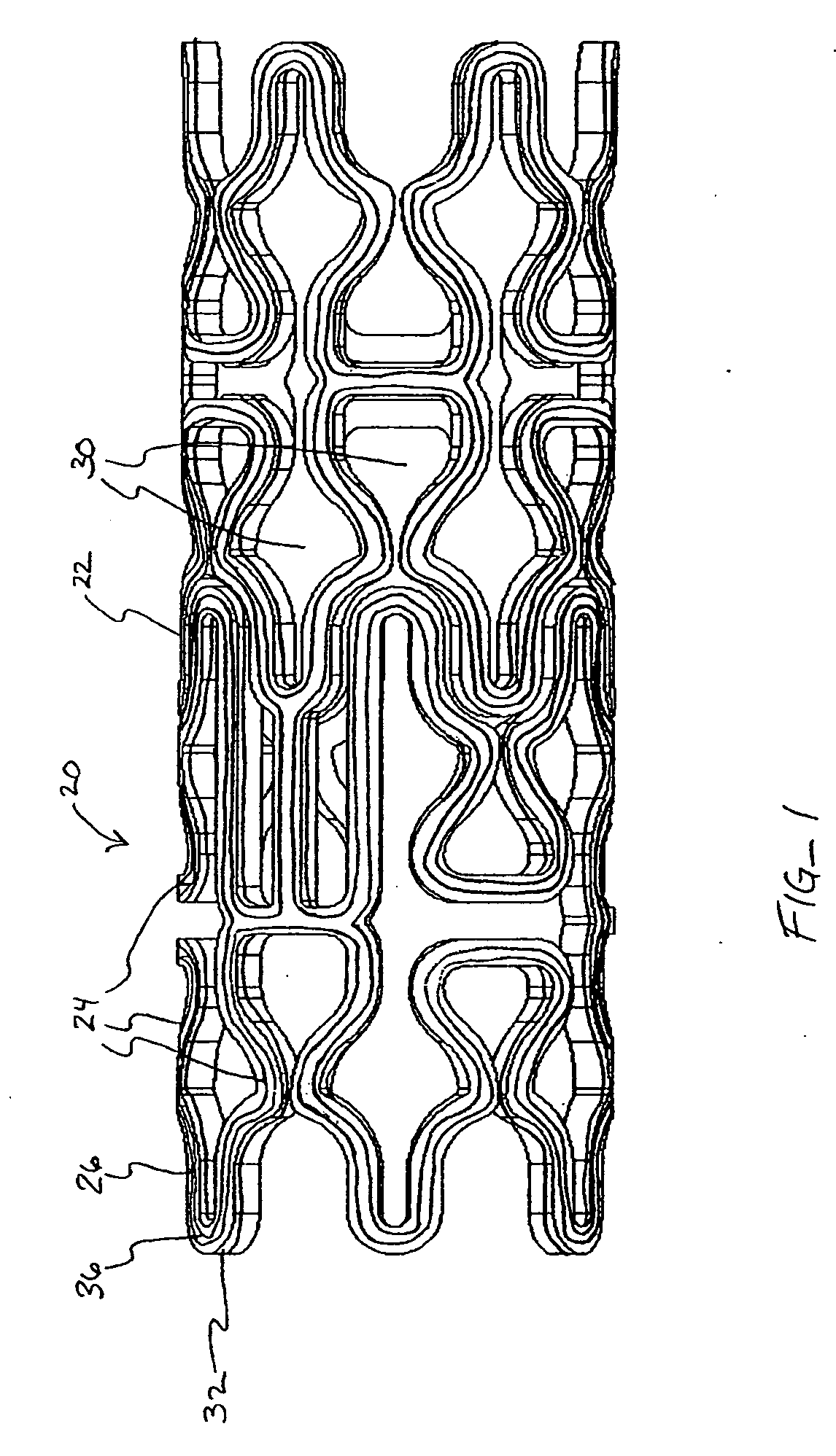Topographic coatings and coating methods for medical devices
a technology of topographic coatings and medical devices, applied in the direction of colloidal chemistry, prosthesis, blood vessels, etc., can solve the problems of destroying or removing any therapeutic agent deposited thereon, and achieve the effect of facilitating the manipulation of medical devices
- Summary
- Abstract
- Description
- Claims
- Application Information
AI Technical Summary
Benefits of technology
Problems solved by technology
Method used
Image
Examples
second embodiment
[0041] In a second embodiment, shown in FIGS. 4A-B, topographic layer 32 is formed in a single ridge 38 on outer surface 26 generally parallel to the struts 24, forming two low elevation regions 40 on either side of ridge 38. A therapeutic agent may then be deposited in either or both low elevation regions 40.
third embodiment
[0042] In a third embodiment, shown in FIGS. 5A-5B, topographic layer 32 is formed in a single ridge 42 covering substantially all of outer surface 26. Topographic layer 32 may be impregnated or mixed with a therapeutic agent that elutes from it at a desired rate. Alternatively, reservoirs, depressions, concavities, holes or other regions of low elevation may be formed in ridge 42 by masking during deposition or after deposition by drilling, heating, cutting, etching, or other methods, as illustrated in FIGS. 8A-B below. A therapeutic agent may then be deposited in the low elevation regions. As a further alternative, topographic layer 32 may be used to facilitate manipulation of the stent in a stent delivery catheter, as described more fully below.
[0043] Referring now to FIGS. 6-7, in a further embodiment, topographic layer 32 is formed in a plurality of bumps 44 in a predetermined pattern on outer surface 26. In this embodiment, topographic layer 32 may be comprised of a therapeuti...
PUM
 Login to View More
Login to View More Abstract
Description
Claims
Application Information
 Login to View More
Login to View More - R&D
- Intellectual Property
- Life Sciences
- Materials
- Tech Scout
- Unparalleled Data Quality
- Higher Quality Content
- 60% Fewer Hallucinations
Browse by: Latest US Patents, China's latest patents, Technical Efficacy Thesaurus, Application Domain, Technology Topic, Popular Technical Reports.
© 2025 PatSnap. All rights reserved.Legal|Privacy policy|Modern Slavery Act Transparency Statement|Sitemap|About US| Contact US: help@patsnap.com



